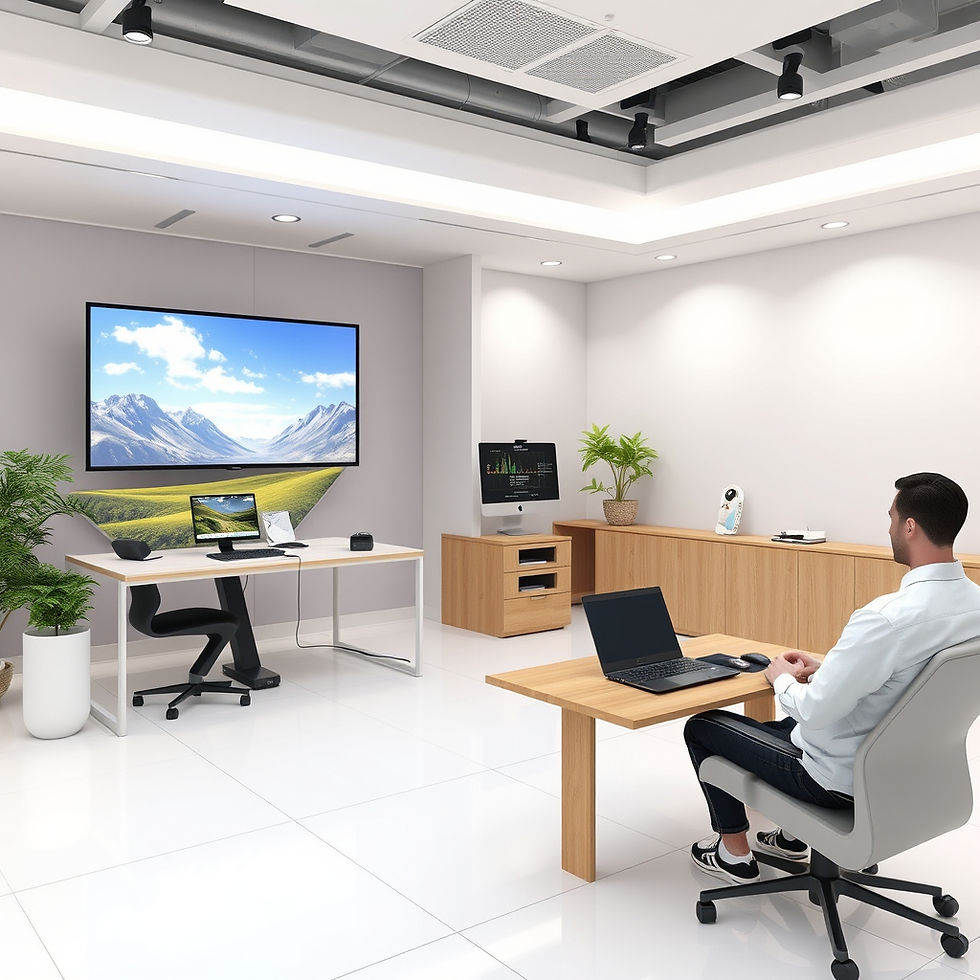Why Real-Time Feedback Is the Game-Changer in Simulation Training
- Geniuscrate

- Aug 1
- 2 min read
Updated: Aug 11

In simulation-based training, immersion is key, but just immersion alone isn’t enough.
Without real-time feedback, users can wander through scenarios without truly learning. The best simulations do more than replicate real-world environments, but they also respond dynamically to every action, mistake, or success. That’s where real-time feedback becomes the silent mentor.
What Is Real-Time Feedback in Simulation?
Real-time feedback refers to instant, adaptive responses delivered during the simulation. It can come in the form of:
Visual cues (like flashing warnings or performance meters)
Audio prompts (“Check your oxygen tank!”)
Haptic feedback (controller vibrations during equipment misuse)
Performance dashboards that update live
Instead of post-session reports, learners know exactly what they’re doing right (or wrong) in the moment.
Why Static Feedback Falls Short
Traditional training relies heavily on delayed feedback, including post-exam results, debriefs, or static corrections. But this model:
Slows down learning cycles
Increases the risk of reinforcing mistakes
Fails to replicate high-stakes decision-making under pressure
Real-time systems flip that script by turning mistakes into live learning moments.
The Benefits of Real-Time Feedback in 3D Training
Accelerated Skill Acquisition: Learners adjust their approach immediately, reducing repeated errors.
Improved Engagement: Instant feedback keeps users alert and involved throughout the session.
Higher Retention Rates: Responding to feedback in context reinforces memory through active learning.
Safer Mistake-Making: Especially in military or industrial simulations, real-time cues allow risk-free trial and error.
Feedback Types to Incorporate in Simulations
For a well-rounded immersive experience, consider layering:
Corrective Feedback – "Try adjusting your grip."
Positive Reinforcement – Visual/audio affirmations for correct actions.
Predictive Alerts – "If you proceed, this may overheat."
Data-Driven Summaries – Real-time charts of accuracy, speed, or safety compliance.
At GeniusCrate, we use adaptive logic that evolves with the learner, s that no two runs feel the same.
How GeniusCrate Designs Feedback Loops
We build real-time feedback as a core system, not an afterthought. That means:
Embedding feedback directly into 3D environments and interactions
Using Unreal Engine or Unity to script adaptive response systems
Syncing with voice-over or AI-guided narration
Visualizing progress with HUDs, gauges, and on-object cues
Our team ensures the feedback never breaks immersion, but it enhances it.
Real-World Application Scenarios
Medical Simulations: Instant warnings when sterile procedure is broken.
Firefighter Training: Real-time environment reactions (e.g., smoke building up from bad decisions).
Military Ops: Feedback on formation errors, movement timing, or missed checkpoints.
In all cases, the learning curve steepens, but so does the impact.
Conclusion: Make Feedback Your Simulation’s Superpower
If your training simulations aren't delivering real-time feedback, they’re missing the mark. In a fast-paced world, learners need a guide that reacts, corrects, and reinforces instantly.
Looking to integrate real-time intelligence into your simulation?
Partner with GeniusCrate and build a smarter, more responsive training system.



Comments